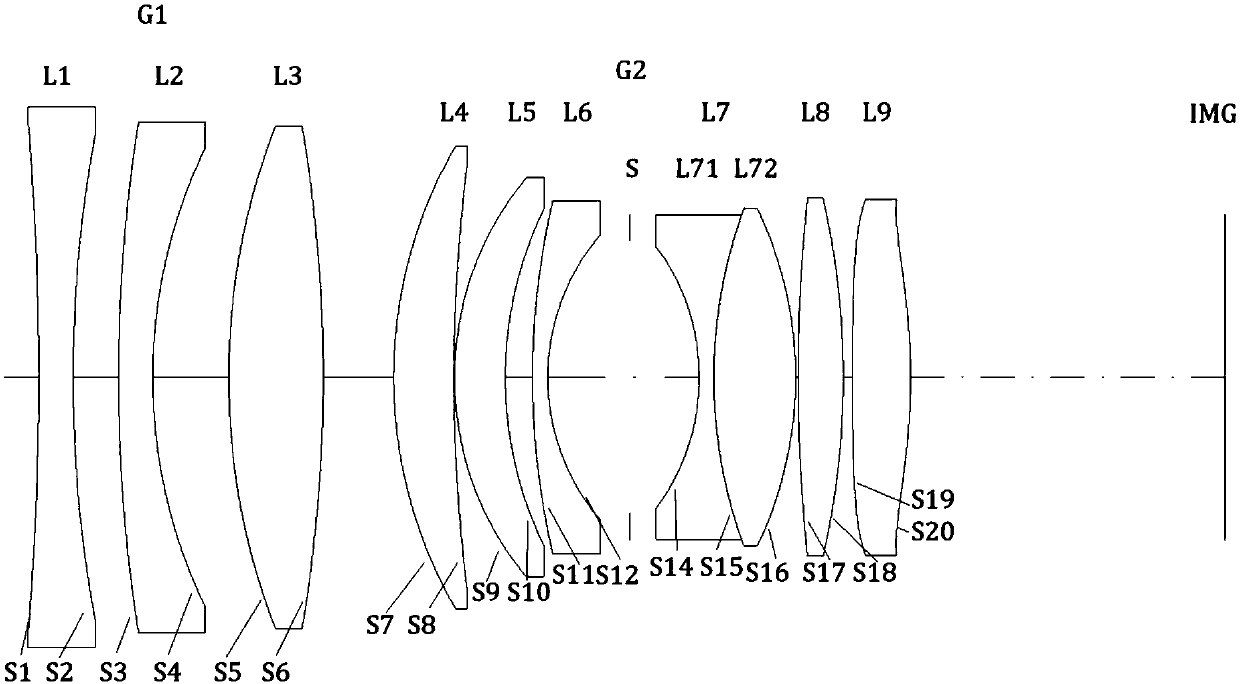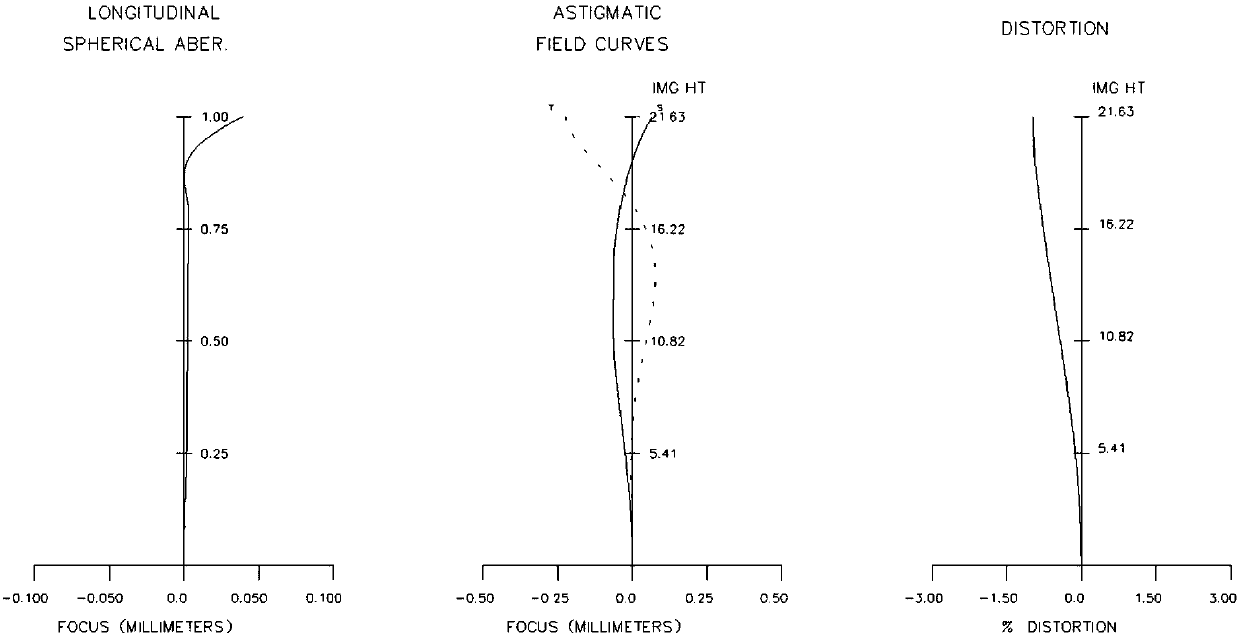Standard exchangeable fixed-focus lens
A fixed-focus lens and interchangeable technology, which is applied in the field of standard interchangeable fixed-focus lenses, can solve the problems of being unable to meet the requirements of video and film shooting, unable to match high-resolution cameras, and camera lenses that cannot meet the requirements, and achieve favorable Accurate exposure, reduced breathing effect, and less distortion
- Summary
- Abstract
- Description
- Claims
- Application Information
AI Technical Summary
Problems solved by technology
Method used
Image
Examples
Embodiment 1
[0021] Such as figure 1 As shown, this embodiment includes: a first lens L1 with negative refractive power, a second lens L2 with negative refractive power, a third lens L3 with positive refractive power, and a third lens L3 with positive refractive power arranged sequentially from the object side to the image side The fourth lens L4 with positive power, the fifth lens L5 with positive power, the sixth lens L6 with negative power, the stop S, the cemented lens with negative power, namely the seventh lens L7, with The eighth lens L8 with positive refractive power, the ninth lens L9 with positive refractive power; when the subject changes from infinity to close distance, the first lens group G1 is fixed, and the second lens group G2 is from the side of the image to the object Move sideways to focus, that is, the rear group floating focus.
[0022] The front and rear lenses of the diaphragm, that is, the curvature ratio of the sixth lens L6 and the cemented lens L7 satisfies (0....
Embodiment 2
[0040]Compared with Embodiment 1, the second lens and the third lens in this embodiment form a cemented lens, and the EFL of the lens of this embodiment=50.0, TNO=1.30 (TNO is the aperture value after calculating the transmittance of the lens), each The structural parameters of the lens are shown in Table 4, and the imaging parameters are as follows Figure 4 and Figure 5 shown.
[0041] Table 4 lens structure parameters
[0042]
[0043]
[0044] table 5
[0045]
POS1
POS2
Z0
INF
305
Z1
8.75
1.00
FOV
45.95
45.30
[0046] The process of changing from D0 to D1 is the process of changing the object distance from infinity to the shortest photographic distance. FOV is the field of view of the lens. When changing from D0 to D1, FOV only changes by 1.4%, and the breathing effect is weak.
[0047] Table 3 shows the aspheric coefficients of the ninth lens L9.
[0048] Table 6 Lens Aspheric Coefficients
[0049] ...
PUM
 Login to View More
Login to View More Abstract
Description
Claims
Application Information
 Login to View More
Login to View More - R&D
- Intellectual Property
- Life Sciences
- Materials
- Tech Scout
- Unparalleled Data Quality
- Higher Quality Content
- 60% Fewer Hallucinations
Browse by: Latest US Patents, China's latest patents, Technical Efficacy Thesaurus, Application Domain, Technology Topic, Popular Technical Reports.
© 2025 PatSnap. All rights reserved.Legal|Privacy policy|Modern Slavery Act Transparency Statement|Sitemap|About US| Contact US: help@patsnap.com



